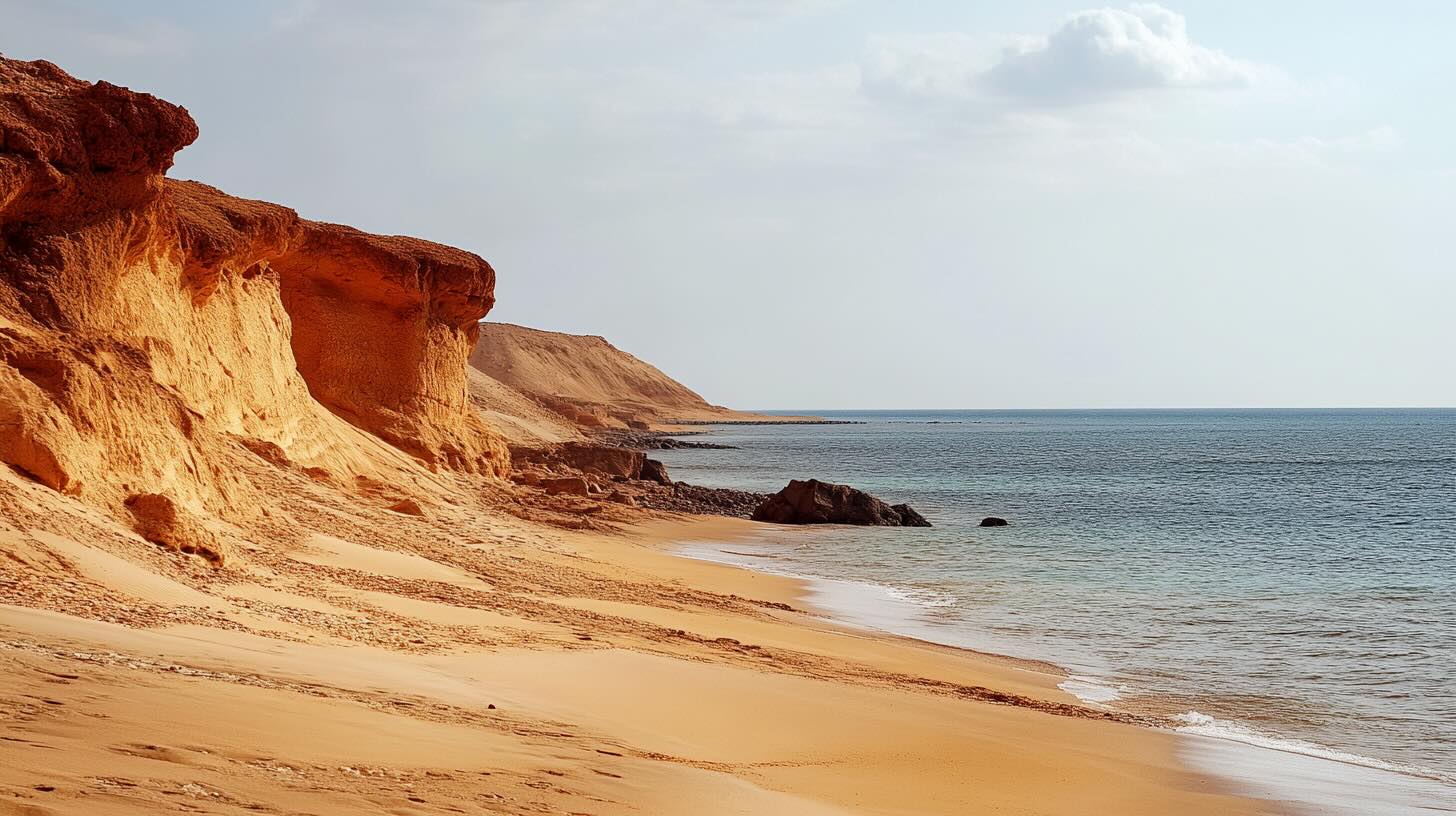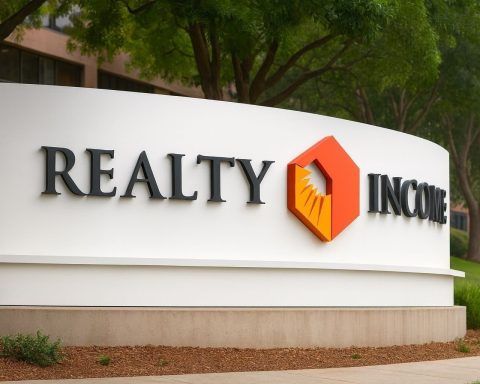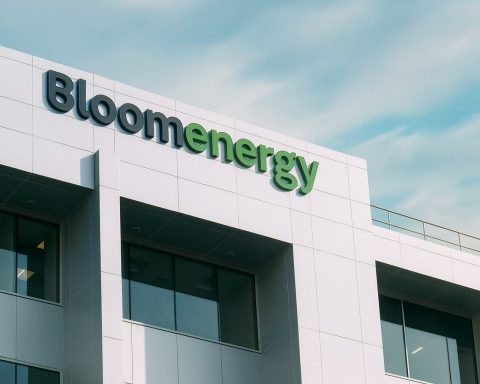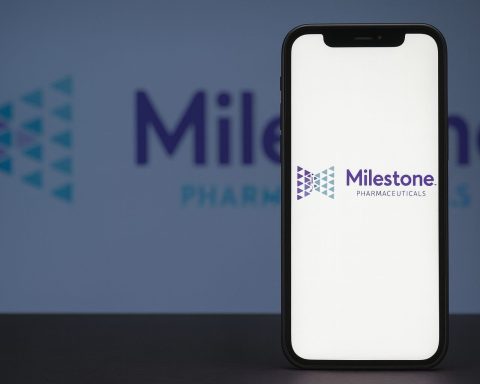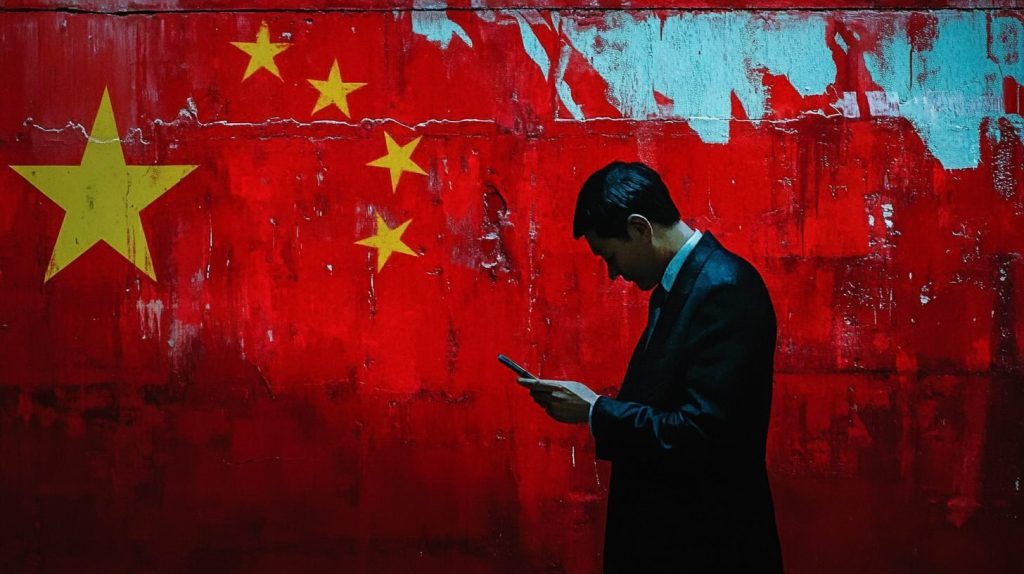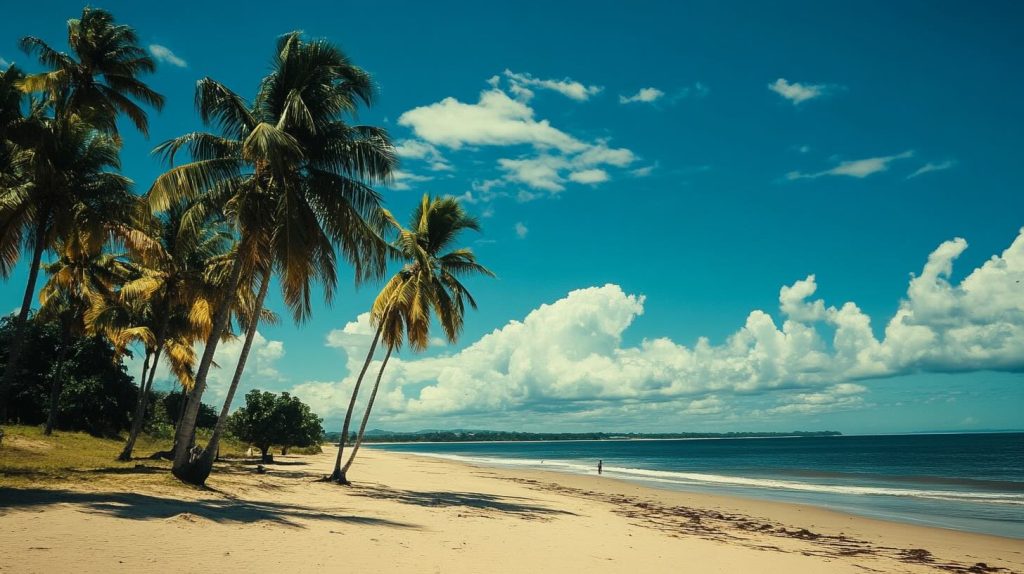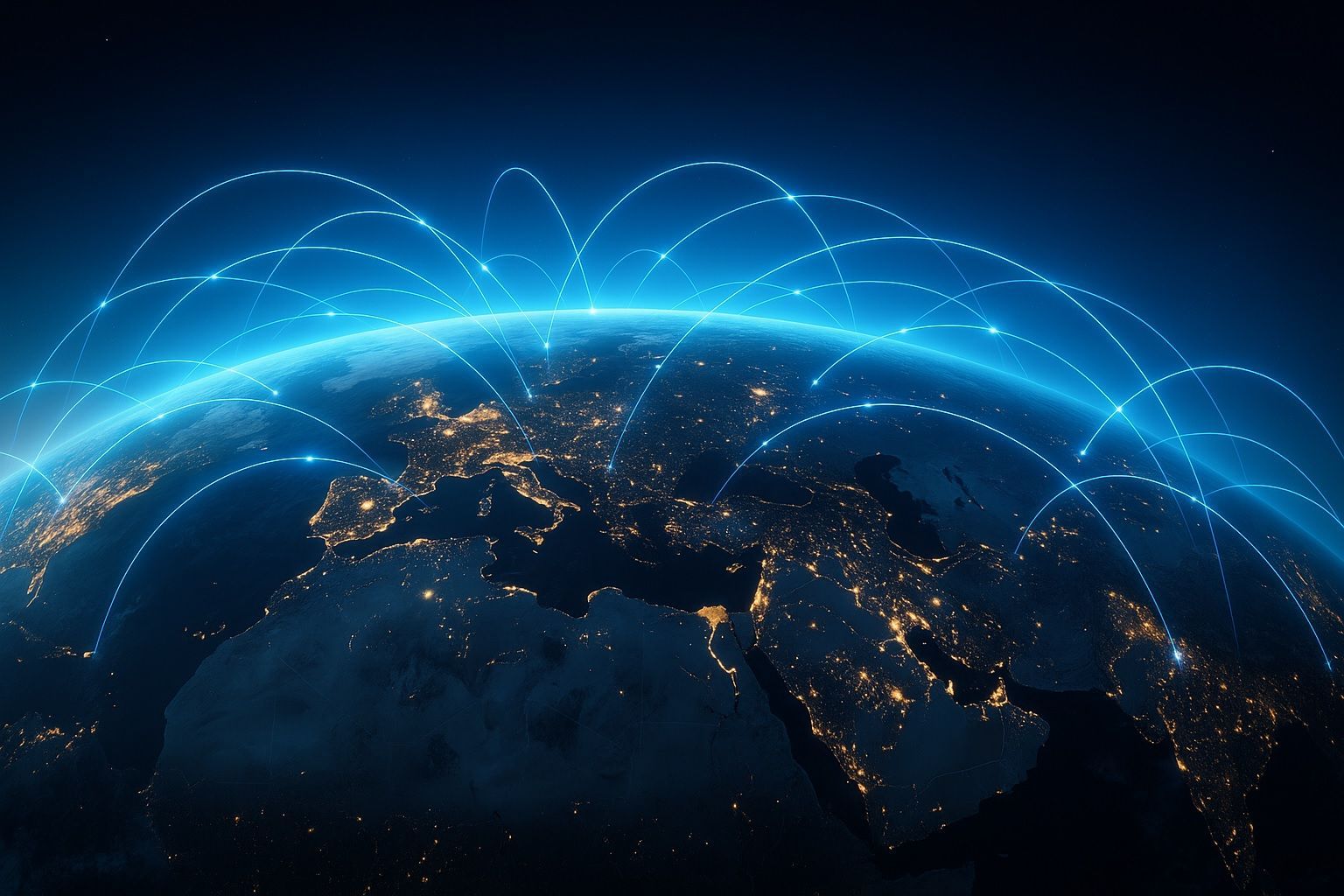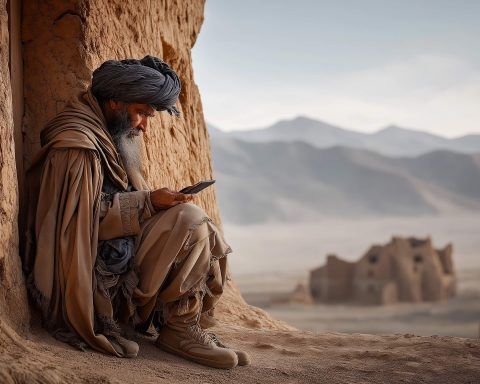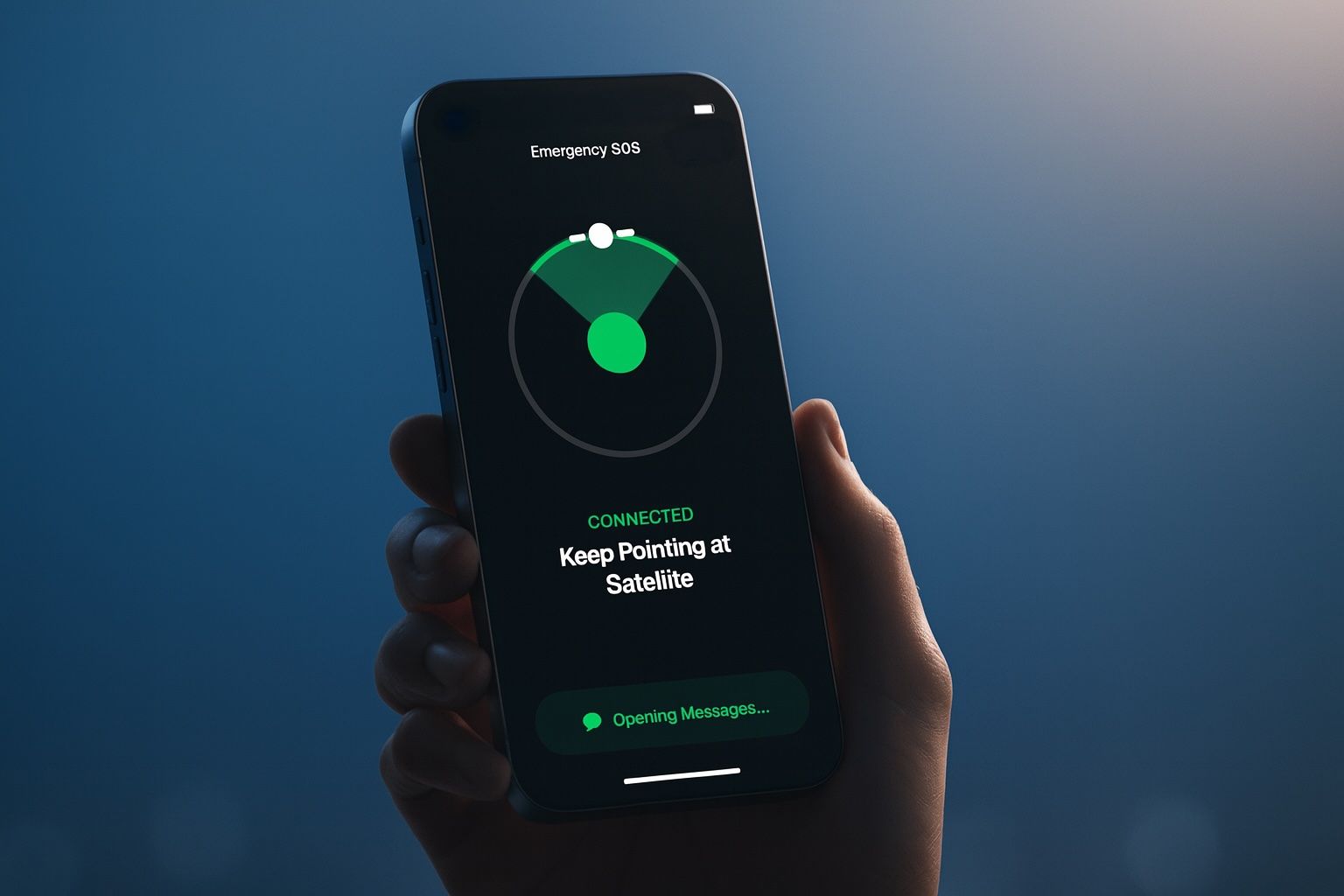- Libya’s core internet framework is state-dominated under the Libyan Post, Telecommunication and Information Technology Company (LPTIC), with LTT as the leading fixed broadband and data services ISP, Libyana and Al-Madar Al-Jadeed as two state mobile operators, and about 25 private ISPs plus 23 VSAT operators licensed since 2011.
- Libyana launched 4G LTE in January 2018 and had 49 towns covered by April 2022, while Al-Madar Al-Jadeed launched 4G in October 2018 and claimed over 80% population coverage by 2022, with 4G availability reaching 76.8% of locations by early 2023.
- There were 12.4 million active mobile connections by June 2023, equivalent to about 179% of Libya’s population.
- Libya’s international connectivity includes the Silphium undersea cable linking Derna to Greece and a planned 1,000-km domestic undersea cable between Tripoli and Benghazi to strengthen backbone links.
- RLTT uses Inmarsat’s L-band satellites for IoT in oil and gas, and RLTT has a multi-year deal with OneWeb to deliver low-latency broadband across Libya with service expected in early 2024, while Starlink had not received a Libyan operating license as of early 2024.
- The government licensed at least 23 VSAT operators after 2011, and in 2018–2019 it signed an $80 million Arabsat contract to provide satellite broadband nationwide.
- Libya experienced a nationwide internet blackout during the 2011 uprising, and in 2023 Benghazi faced a week-long outage (LAAF action) with Derna suffering a four-day communications blackout after floods.
- Regulatory oversight remains fragmented with no unified regulator, following a 2014 draft telecommunications law that was never enacted.
- As of early 2024 Libya had about 6.13 million internet users, 88.4% of the population online, with fixed broadband subscriptions around 326,000 in 2022, reflecting strong mobile access but uneven fixed connectivity.
- On Ookla Speedtest in 2023, Libya ranked about 161st of 179 countries, with median mobile download speeds around 8–16 Mbps and typical consumer plans around 8–10 Mbps, illustrating high access but low performance.
Internet Infrastructure and Major Service Providers
Libya’s internet infrastructure is recovering and evolving after years of conflict. Under Muammar Gaddafi’s regime, the telecom sector was entirely state-controlled and private competition was virtually nonexistent [1]. The primary telecommunications holding is the Libyan Post, Telecommunication and Information Technology Company (LPTIC), which oversees key state-owned providers [2]. Major service providers include:
- Libya Telecom & Technology (LTT) – the state-owned ISP and data services company. LTT is the leading internet service provider, offering fixed broadband and mobile internet services, and it operates critical infrastructure like data centers [3].
- Libyana Mobile Phone Company – one of two state-owned mobile operators (a subsidiary of LPTIC) offering nationwide GSM/3G/4G services. Libyana launched 4G LTE in 2018 and expanded to dozens of cities [4].
- Al-Madar Al-Jadeed – the other state-owned mobile operator under LPTIC. It rolled out 4G in late 2018, initially in Tripoli, Benghazi, and Misrata, and by 2022 claimed over 80% population coverage [5].
- Libyan International Telecom Company (LITC) – the entity managing international connectivity (e.g. Libya’s connections to submarine fiber-optic cables and satellite gateways). LITC has developed links like the Silphiumundersea cable connecting eastern Libya (Derna) to Greece, the country’s first wholly-owned international cable [6]. It also participates in new projects (e.g. a 1,000 km domestic undersea cable between Tripoli and Benghazi) to improve backbone links [7].
- Private ISPs and VSAT operators – Since the 2011 revolution, Libya has opened up licensing to new providers. As of a few years after the conflict, around 25 private ISPs and 23 VSAT (satellite internet) operators had been licensed to foster competition alongside the state companies [8]. Some notable private ISPs include LNET, Giga, and Rawafed Libya (RLTT), which provide services like fixed wireless, fiber broadband for businesses, and satellite-based connectivity in underserved areas.
Libya’s international bandwidth comes through a mix of submarine cables and satellite links. The country is connected to Europe and regional networks via undersea fiber – for example, an older cable to Italy (Sicily) and the newly operational Silphium cable to Greece [9]. In 2023, Libya also signed on to the upcoming Medusa pan-Mediterranean cable, which will land in Tripoli and Benghazi by 2025, boosting international capacity and redundancy [10] [11]. These developments aim to improve a network that, despite damage from war, remained “one of the more robust in the region” by the mid-2010s [12]. Overall, Libya’s core internet infrastructure is state-dominated but is gradually diversifying, with new investments in fiber and satellite backbones to reconnect and upgrade the country after the disruptions of civil conflict.
Government Regulations, Policies, and Censorship
Government control and regulation of the internet in Libya have fluctuated through regime change and ongoing instability. During Gaddafi’s rule, the state tightly regulated internet access – only government-run companies provided services, and authorities did not hesitate to shut off connectivity in times of unrest. Notably, during the 2011 uprising, the regime imposed a nationwide internet blackout for days to stifle dissent [13]. That legacy of using connectivity as a means of control has continued in various forms. Even after Gaddafi, Libya lacks a unified, strong regulatory framework; a draft telecommunications law in 2014 proposed an independent regulator, but it was never enacted amid the political chaos [14]. In practice, oversight is split among competing authorities in the east and west, and armed groups often influence policy enforcement.
Censorship remains a concern. In 2013, the post-revolution government directed ISPs to filter “pornographic” websites, but the filtering appliance ended up over-blocking many sites including proxies and political content from rival factions [15]. This incident showed how censorship tools can be repurposed to silence dissent. In recent years, officials and militia-aligned authorities have sought to police social media content under the banner of protecting social values. For example, in 2022 the Tripoli-based Civil Society Commission called on the telecom ministry to ban TikTok, claiming it promotes “moral decay” and violates Libyan cultural norms [16] [17]. Although TikTok was not ultimately banned, such pressures reflect a policy trend of restricting online platforms deemed culturally or politically undesirable. Many activists and bloggers practice self-censorship, as armed groups have harassed and detained people for online criticism of authorities or social issues [18] [19].
Regulatory attempts to criminalize online speech have further eroded internet freedom. In September 2022, the eastern-based parliament (House of Representatives) passed a new Anti-Cybercrime Law that contains broad provisions against posting false or offensive content. It was enforced starting February 2023, when at least two women were arrested for social media posts allegedly violating “public morals” under this law [20]. Human Rights Watch and UN experts condemned the law for infringing free expression and privacy, urging its repeal [21]. In the west, the Tripoli authorities have their own Internal Security agency that has detained activists for online activities (for instance, jailing members of a youth movement on accusations of “atheism” based partly on their digital content) [22]. Thus, across Libya, multiple power centers impose censorship – either through legal means, direct intimidation, or even network shutdowns – creating a precarious environment for internet freedom.
At the same time, Libya’s formal internet governance is in flux. Efforts to create a stable, nationwide regulatory regime (such as unifying the LPTIC and establishing a telecom regulator) have been hampered by political rivalries [23] [24]. In absence of consistent rule of law, internet policy is often driven by security concerns of those in power. Both the eastern and western authorities have justified extreme measures like shutting down the internet as necessary for national security or moral order, with little transparency or oversight. Overall, government policy in Libya oscillates between attempts to modernize and expand digital access, and heavy-handed tactics of surveillance and censorship reminiscent of both the old regime and the urgencies of civil war.
Internet Accessibility, Penetration Rates, and the Digital Divide
Internet access has expanded greatly in Libya over the past two decades, but it is unevenly distributed. In the year 2000, there were only around 10,000 internet users in the entire country; by 2010, that number had grown to about 353,900 users (roughly 5% of the population) [25]. The fall of the Gaddafi regime and the introduction of mobile data services accelerated growth in the 2010s. As of early 2024, Libya had an estimated 6.13 million internet users, representing 88.4% of the population [26]. This penetration rate is remarkably high – more than four out of five Libyans use the internet, a leap that places Libya among the top African countries for connectivity. (By comparison, only 19.9% of Libyans were using social media in 2012 [27], illustrating the rapid digital uptake since then.) However, these figures may mask disparities in the quality and consistency of access across different communities.
The urban-rural divide is a key factor. Over 80% of Libyans live in urban coastal cities [28], where infrastructure is relatively better and 3G/4G mobile networks are available. In cities like Tripoli, Benghazi, Misrata, and Sebha, residents can subscribe to 4G home broadband or use mobile data, and many households have some form of internet. In contrast, the sparsely populated interior and southern regions face a bigger digital divide. Rural villages and remote desert communities often lack reliable telecommunications; they may only have basic 2G phone service or depend on expensive satellite links for internet. Even within cities, connectivity can differ by socioeconomic status – wealthier neighborhoods might have fiber or ADSL lines (some private ISPs offer fiber in Tripoli), whereas other areas rely on shared wireless hotspots or internet cafés. Affordability of devices and data plans also affects usage. Libya’s per capita income is relatively high due to oil, so smartphones are common, but ongoing economic instability and inflation can make internet and hardware costs burdensome for lower-income and displaced families.
Another aspect of the digital divide is service quality. While a large share of the population is technically “online,” not everyone enjoys fast or always-on connectivity. Many users access the internet primarily through mobile phones with prepaid data packages, rather than fixed broadband. The number of fixed broadband subscriptions was only about 326,000 in 2022 (roughly 4.6 per 100 people) [29], indicating that dedicated home internet lines are still limited. In areas with poor electricity supply, maintaining an internet connection is challenging – when power cuts occur (a frequent issue in Libya), home routers and mobile base stations alike can go down. Additionally, some regions have suffered extended outages during conflicts, reducing effective access even if the national penetration rate looks high. For example, during bouts of fighting or network blackouts imposed for security, entire cities can be cut off (as happened in Sirte during battles with ISIS, and more recently in parts of the south during protests) [30].
In summary, Libya’s internet penetration rate is high on paper, and most Libyans have at least intermittent access to online services, largely thanks to widespread mobile network coverage. But a digital divide persists between connected coastal cities and isolated rural/frontier areas, and between those who can afford high-speed connections and those who make do with patchy, slow service. Efforts are underway to close these gaps – for instance, expanding 4G coverage to smaller towns and subsidizing connectivity – yet until Libya achieves stable electricity, security, and economic conditions nationwide, disparities in access will remain an issue.
Challenges Affecting Connectivity in Libya
Libyan internet connectivity faces a range of challenges, stemming from political turmoil, economic difficulties, and technical vulnerabilities. Key challenges include:
- Political Instability and Conflict Damage: A decade of civil conflict has physically damaged telecom infrastructure. During the 2011 war and subsequent fighting, mobile phone towers were stolen or destroyed, fiber links were cut, and networks were severed between east and west [31]. Rival factions have at times operated separate networks or deliberately cut off services to territories held by opponents. Although a ceasefire in 2020 eased large-scale conflict, Libya still has rival administrations (in Tripoli and Tobruk/Benghazi) whose power struggles can disrupt nationwide telecom operations [32]. Rebuilding infrastructure in war-torn areas remains difficult amid lingering insecurity.
- Intentional Network Shutdowns: Both government authorities and militias have repeatedly shut down internet and phone networks during periods of unrest or military operations. For example, in October 2023, the Libyan National Army (LAAF) in the east abruptly cut off internet access in Benghazi for over a week under the pretext of targeting a “destructive cell,” isolating the city [33]. Similarly, after the Derna floods in September 2023 led to protests, eastern authorities imposed a four-day communications blackout in that city [34]. In other instances, such as demonstrations in Sirte, connectivity has been deliberately disrupted to quell dissent. These shutdowns, often justified as security measures, are in fact used to stifle opposition and conceal military or police actions, violating citizens’ rights to access information [35] [36]. The threat of sudden outages makes Libya’s internet connectivity highly unreliable in crisis situations.
- Power and Infrastructure Problems: Chronic electricity shortages and fuel crises significantly affect telecom services. Libya’s power grid has been fragile since the war, leading to daily blackouts in many areas. Telecom equipment – from mobile towers to routers – needs generators or backup power, which are not always available or maintained. The result is frequent network downtime in parts of the country. Additionally, spare parts and new equipment for telecom networks have been hard to import at times (due to conflict or funding issues), slowing the repair and upgrade of aging infrastructure [37]. The country’s vast size and difficult desert terrain also pose logistical challenges for extending fiber-optic backbones or repairing remote infrastructure quickly.
- Economic and Governance Challenges: Although Libya is oil-rich, the instability has diverted funds away from telecom development and made large projects risky. A major telecom investment plan of US$1.7 billion was announced in 2018 to improve connectivity and merge various telecom companies [38], but progress has been halting. Corruption and bureaucratic overlaps further impede projects. Moreover, the lack of a unified regulatory authority means there is no consistent national strategy for connectivity – plans can stall when governments change or when local actors veto projects. Telecom companies also struggle with revenue collection amid economic turmoil, which can affect their ability to expand services.
- Cybersecurity Threats: In recent years, cyber-attacks have emerged as a disruptive threat to Libya’s internet services. In mid-2023, LPTIC reported that its national data center sustained constant cyber-attacks for days, causing service outages for users [39]. The attacks targeted LTT’s infrastructure and forced emergency response with help from international partners [40]. It’s unclear who was behind these attacks (possibilities range from state-sponsored actors to local saboteurs), but the incident underscored the vulnerability of Libya’s digital infrastructure to hacking or malware. Given the geopolitical tensions, there is concern that hackers could further disrupt networks or compromise data, adding another layer of instability.
- Natural Disasters and Environmental Factors: Unexpected events like the September 2023 floods in eastern Libya also highlight environmental risks to connectivity. The floods damaged telecom cables and knocked out power in the Derna region, cutting off communications for days [41] [42]. Restoring service required diverting resources to emergency repairs, likely delaying planned expansion projects [43]. Extreme heat and sandstorms in the Sahara interior can also degrade equipment and interrupt satellite links. As climate change potentially increases the frequency of such events, Libya’s connectivity will need more redundancy and disaster preparedness.
In combination, these challenges mean that providing stable, country-wide internet access in Libya is an uphill battle. Any gains in infrastructure can be quickly set back by fighting or political decisions. However, efforts are ongoing to mitigate these issues – for instance, using satellite systems as backup during fiber cuts, pursuing political reconciliation to unify networks, and seeking international assistance to bolster cybersecurity. The resilience of Libya’s internet is gradually improving, but vulnerabilities remain that are closely tied to the nation’s broader instability.
The Role of Mobile Networks and Broadband Expansion Efforts
Mobile networks are the linchpin of internet access in Libya, and expanding mobile broadband has been a major focus of post-conflict reconstruction. Libya has a duopoly mobile market dominated by the two LPTIC subsidiaries, Al-Madar Al-Jadeed and Libyana, which together serve virtually all mobile users [44]. Both operators have worked to restore and upgrade coverage after the damage of the civil war. In 2018, they launched 4G LTE services (initially in major cities) and have steadily extended them across the country [45]. Libyana was first to launch LTE in January 2018, covering 30 towns by year-end 2018, and growing to 49 towns by April 2022 [46]. Al-Madar followed in October 2018 and, after rolling out in Tripoli, Benghazi, Misrata, it claimed to cover more than 80% of the population with 4G by 2022 [47]. This rapid deployment, even amid Libya’s challenges, was aided by government support and vendor partnerships. Contracts with firms like Nokia and Ericsson were signed to build a national mobile broadband network and improve LTE infrastructure [48].
Thanks to these efforts, mobile penetration in Libya is extremely high – by June 2023 there were about 12.4 million active mobile connections, equivalent to 179% of the population (many people have multiple SIM cards) [49]. This is one of the highest mobile penetration rates in Africa [50]. For most Libyans, mobile broadband is the default way to get online. 3G networks blanket most settled areas, and 4G coverage has expanded fast: the proportion of locations where users have 4G service jumped from only 11.8% in 2019 to 76.8% by early 2023 [51]. By 2023, northern and coastal regions enjoy broad LTE coverage, as shown by coverage maps turning from red to green in those areas [52]. Even some remote southern towns (e.g. in the Fezzan region) have recently seen 4G base stations installed as part of LPTIC’s program to extend coverage to underserved areas [53]. In late 2021, LPTIC announced a project specifically to bring mobile service to the south, emphasizing connectivity as a priority for national unity [54].
The expansion of mobile broadband has also led to improvements in speed and capacity, though Libya still lags behind global standards (as discussed in the comparison section). As of mid-2023, median mobile download speeds reached about 15 Mbps, up significantly from the single-digit speeds a few years earlier [55]. Both Libyana and Al-Madar have deployed LTE-Advanced in some areas to boost throughput. Al-Madar in particular was noted to provide slightly faster average downloads (it led in Opensignal’s speed tests with ~6.3 Mbps vs Libyana’s 5.4 Mbps in 2021) [56], but Libyana has improved and both now offer comparable performance. However, network congestion and limited spectrum mean that Libya’s 4G speeds remain low compared to other countries – the operators and regulators recognize there is “room to improve capacity” to reach global 4G performance levels [57]. Plans to address this include adding more 4G towers, optimizing backhaul links, and eventually considering 5G technology once the market and political situation allow it. As of 2024, 5G has not been launched in Libya; the focus is on achieving reliable nationwide 4G and extending fiber-optic backbones to support future upgrades.
Beyond mobile, there have been efforts to expand fixed broadband access, albeit at a slower pace. LTT offers ADSL and WiMAX/fixed-LTE services in some cities for home and business internet, and a few private ISPs provide fiber to the premises for large clients. The government’s expansion programs have included “last mile” connectivity projects to bring broadband to more homes [58]. For example, the 2018 telecom development plan aimed to merge six telecom subsidiaries to streamline operations and invest in fiber infrastructure to improve broadband reach [59]. Some progress is visible: fixed broadband subscriptions quadrupled from the early 2010s to reach roughly 300k+ by 2022 [60]. Still, fixed-line internet remains underdeveloped – many telephone lines were never restored after the war, and most investment has gone into mobile. To bridge this gap, Libya has also pursued fiber-optic transmission projects: notably, a new 1,000 km undersea fiber cable is being built along the coast to directly connect Tripoli and Benghazi [61], which will improve intercity bandwidth and could enable higher-speed internet services in all coastal cities once completed.
In summary, mobile networks have been the backbone of Libya’s internet revival. The coordinated 4G rollout by Libyana and Al-Madar since 2018, backed by LPTIC and foreign partners, has brought broadband to the masses relatively quickly despite instability. The country went from almost no 4G coverage to nearly nationwide coverage in about five years [62] [63]. These expansion efforts continue (with a pause to address the aftermath of the 2023 floods [64]), and there is cautious optimism that as the political situation stabilizes, Libya can further modernize its mobile networks and eventually reintroduce robust fixed broadband options. Mobile internet will continue to play a critical role in connecting Libyans, and ongoing projects aim to make it faster, more reliable, and accessible to even the remotest corners of the country.
Satellite Internet: Availability, Providers, Regulations, and Future Potential
Given Libya’s large geographic size, scattered population, and war-damaged infrastructure, satellite internet has been and remains an important component of connectivity. Satellite internet availability in Libya comes in several forms: traditional VSAT services, partnerships with regional satellite operators, and newly emerging low-Earth orbit (LEO) broadband constellations.
Historically, VSAT (very small aperture terminal) satellite links have been used to connect oil fields, NGOs, and remote offices in Libya’s deserts where terrestrial networks are absent. The government began licensing private satellite service providers after 2011, resulting in at least 23 VSAT operators authorized to operate in the country [65]. Companies like Rawafed/ RLTT (Rawafed Libya for Telecommunications and Technology) specialize in satellite and wireless solutions, providing connectivity to sectors like banking, education, and especially oil and gas installations [66] [67]. In one example, RLTT uses Inmarsat’s L-band satellites to deliver IoT data services for “digital oilfield” monitoring of pipelines and wells across Libya’s oilfields, boasting 99.9% uptime even in remote locations [68] [69]. This illustrates how critical satellite links are for Libya’s key industries: they enable operations in areas far beyond the reach of fiber or even cell towers, and add a layer of redundancy for vital infrastructure.
On a larger scale, the Libyan government has pursued deals with satellite telecom providers to broaden internet access. In 2018–2019 the telecom ministry signed an $80 million contract with Arabsat to provide satellite broadband services in Libya [70]. Arabsat (a regional geostationary satellite operator) would supply high-speed internet capacity via satellite, likely aimed at supplementing rural connectivity and providing backup links for cities during outages. The status of this project is not fully clear, but it underscores official interest in satellites as part of the national broadband strategy. Regulatory-wise, authorities require licenses for any ground satellite equipment; operating an unlicensed satellite terminal is generally prohibited due to security concerns. The Ministry of Communications (MOCI) has not yet approved any consumer satellite internet systems like SpaceX’s Starlink as of early 2024 [71].
However, the future potential of satellite internet in Libya is significant, especially with new LEO constellations coming online. In late 2023, it was announced that OneWeb, a low-earth orbit satellite internet provider (now part of France’s Eutelsat), has partnered with RLTT to distribute its low-latency broadband across Libya [72]. This multi-year, multimillion-dollar agreement gives RLTT exclusive access to OneWeb’s network to serve Libya, with service expected to begin in early 2024 [73] [74]. The initial targets for OneWeb in Libya are enterprise, government, and humanitarian users (oil, telecom, finance, etc.), but the plan is to expand coverage to reach nationwide connectivity ambitions [75]. Because OneWeb’s satellites orbit much closer to Earth than traditional satellites, they can provide much faster internet (comparable to terrestrial broadband) with lower latency, which could be transformative for regions in Libya that currently suffer very slow speeds.
Meanwhile, Starlink (SpaceX’s satellite internet constellation) has generated buzz in Libya, but it is not officially available yet. Libya is considered one of the key African markets left for Starlink to enter, but as of the end of 2023 no operating license had been granted by Libyan authorities [76]. (Some tech enthusiasts have reportedly imported Starlink kits from abroad and used them unofficially in Libya via roaming, but this remains a gray area.) The government’s caution likely stems from needing to address security and regulatory implications – similar to other countries, they want to ensure satellite internet usage doesn’t bypass national controls without oversight. Nevertheless, if Starlink does launch in Libya in the future, it could immediately provide fast internet to consumers in areas with little infrastructure, given its proven speeds of 50–200 Mbps in other countries.
In the interim, geostationary satellite internet is available through providers like Viasat, Thuraya/IP, and regional ISPs for those who need it and can afford it. These services have higher latency and cost, so they are typically a last resort or used as backup. For example, during the Derna blackout in 2023, having a satellite phone or satellite hotspot was the only way some responders could communicate when land networks were down. Looking forward, Libyan officials see satellites as integral to a resilient network. The LPTIC has mentioned using satellite backbones to bypass damaged infrastructureand reach remote communities [77]. The combination of OneWeb (and potentially Starlink later) with local expertise like RLTT means Libya could leapfrog in connectivity for rural areas and have an emergency fallback for critical communications if ground networks fail.
In terms of regulation, Libya will need to update its policies to accommodate these new satellite services. Coordination with international providers is underway (the OneWeb deal likely had government blessing). Ensuring that satellite internet is used to complement national infrastructure rather than undermine it will be key – this includes managing spectrum, licensing user terminals, and perhaps content monitoring to the extent feasible. If done right, satellite internet has huge future potential in Libya: it can connect isolated desert towns, provide internet to schools and hospitals off the grid, and give all Libyans an alternative path online when politics or disasters knock out the usual networks. The next few years (2024–2025) will be a telling period as OneWeb’s project rolls out and as Starlink or others attempt entry, potentially ushering in a new era of connectivity for Libya independent of its fragile terrestrial cables.
Comparison with Regional and Global Standards (Speed, Freedom, Accessibility)
Libya’s internet landscape, when compared to regional and global benchmarks, presents a mix of high access rates but low performance and freedom:
- Speed and Quality: By global standards, Libya’s internet speeds are very low. On Ookla’s Speedtest Index, Libya ranked around 161st out of 179 countries in 2023 [78]. The median download speed in Libya is reported around 8–16 Mbps (depending on the survey), which is a fraction of the global average (global median ~60 Mbps down) [79]. For context, the United States’ median download is about 135 Mbps [80], underscoring how far behind Libya is. In North Africa, Libya actually has the slowest connectivity – it was noted as having the most sluggish internet in the region, which itself is the slowest region in the world [81]. This poor performance is due to limited bandwidth, infrastructure bottlenecks, and high contention on mobile networks. Even Libya’s “fastest” available consumer plans offer only around 8–10 Mbps in practice [82]. On the positive side, there have been improvements (speeds were in only single megabits a few years ago), but Libya still falls below neighboring countries like Tunisia or Egypt in average speed. Overall, it trails far behind global standards in service quality – a gap that might narrow if new fiber links and satellite options come online as planned.
- Internet Freedom: Libya’s internet freedom environment is restrictive compared to many countries. Freedom House, which tracks internet freedom, rated Libya as “Partly Free” in its last detailed assessment (score 51/100 in 2018) [83], and the situation has likely deteriorated since. Unlike some countries with stable censorship regimes, Libya’s internet freedom issues stem from fragmentation and violence – multiple actors (government agencies, militias, etc.) impose their own controls. This has resulted in routine violations of digital rights: from arresting citizens for social media posts to blanket shutdowns of the internet during protests [84]. In global terms, this places Libya among the more repressive online environments. For instance, deliberate internet shutdowns are a tactic more commonly seen in war-torn or authoritarian states (such as Syria or Sudan); Libya has unfortunately joined that category in recent years [85]. Compared to its Maghreb neighbors, Libya lacks the constitutional protections for free expression that, say, Tunisia enjoyed (Tunisia had a period of relatively free internet post-Arab Spring, though it has regressed recently). Instead, Libya’s situation is more akin to countries like Egypt or Algeria, where authorities tightly monitor online discourse – and in Libya’s case, armed groups add an extra layer of intimidation. In summary, on a global freedom index, Libya would rank poorly: internet users do not enjoy the level of openness found in “Free” countries, and even within the Arab region, Libya’s chaotic censorship (including an active cybercrime law and extra-legal reprisals) makes the internet less free than in some more stable states [86] [87].
- Accessibility and Penetration: In stark contrast to its performance metrics, Libya stands out regionally for its high internet access rate. At 88% penetration (2024), Libya is one of the best-connected countries in Africa [88]. In fact, a Statista analysis ranked Libya second in Africa in internet user percentage (around 88%, just behind the top-ranked country) [89]. This is far above the African average, which hovers around 43% (as of 2022). It even exceeds the world average internet penetration (around 64% in 2023). This paradox – high access, low quality – can be attributed to Libya’s small, urbanized population and the ubiquity of mobile phones. Comparatively, populous nations like Egypt or Nigeria might have more internet users in absolute terms, but their penetration rates are lower (around 70% and 36% respectively in 2023). Regionally, Libya outpaces Algeria (around 60-70%) and Morocco (~84%) in penetration as well [90]. Literacy and education levels in Libya are relatively high, which also helped rapid adoption once the technology became available. That said, the headline number masks the digital divide internally (as discussed earlier). Also, “access” here often means basic mobile internet – the percentage of households with high-speed broadband is much lower. Globally, countries with 88%+ internet use are usually developed nations with robust infrastructure; Libya achieves the percentage but not the equivalent infrastructure. Thus, while Libya can claim near-universal access in a statistical sense, the accessibility experience for many users is limited by slow speeds, outages, and censorship. In a global ranking of “internet inclusivity” (which factors availability, affordability, relevance, and readiness), Libya would have a mixed profile: strong on availability to citizens, but weak on consistency and institutional readiness.
In conclusion, Libya’s internet access sits at a crossroads of extremes: widely available to the population in a way that few other low or middle-income countries have achieved, yet hobbled by technical and political issues that keep it below global standards in speed and freedom. Compared to its regional peers, Libya simultaneously leads in connecting its people but lags in providing a fast, open internet experience. Bridging that gap – by improving infrastructure and protecting digital rights – will be crucial for Libya to meet both regional and global benchmarks in the coming years.
References
1. www.mondaq.com, 2. libyareview.com, 3. libyareview.com, 4. www.gsma.com, 5. www.gsma.com, 6. www.submarinecablemap.com, 7. www.mondaq.com, 8. www.mondaq.com, 9. www.submarinecablemap.com, 10. www.datacenterdynamics.com, 11. www.datacenterdynamics.com, 12. www.mondaq.com, 13. thecondia.com, 14. www.mondaq.com, 15. en.wikipedia.org, 16. smex.org, 17. smex.org, 18. www.hrw.org, 19. www.omct.org, 20. www.hrw.org, 21. www.hrw.org, 22. www.hrw.org, 23. www.refworld.org, 24. www.refworld.org, 25. www.africa-internet.com, 26. datareportal.com, 27. en.wikipedia.org, 28. datareportal.com, 29. tradingeconomics.com, 30. www.omct.org, 31. www.mondaq.com, 32. www.mondaq.com, 33. www.omct.org, 34. www.omct.org, 35. www.omct.org, 36. www.omct.org, 37. www.gsma.com, 38. www.mondaq.com, 39. libyareview.com, 40. libyareview.com, 41. pulse.internetsociety.org, 42. www.omct.org, 43. www.gsma.com, 44. www.gsma.com, 45. www.gsma.com, 46. www.gsma.com, 47. www.gsma.com, 48. www.mondaq.com, 49. datareportal.com, 50. www.gsma.com, 51. www.gsma.com, 52. www.gsma.com, 53. www.gsma.com, 54. www.samenacouncil.org, 55. www.gsma.com, 56. www.opensignal.com, 57. www.gsma.com, 58. www.mondaq.com, 59. www.mondaq.com, 60. tradingeconomics.com, 61. www.mondaq.com, 62. www.gsma.com, 63. www.gsma.com, 64. www.gsma.com, 65. www.mondaq.com, 66. www.inmarsat.com, 67. www.inmarsat.com, 68. www.inmarsat.com, 69. www.inmarsat.com, 70. www.mondaq.com, 71. www.eicon-me.com, 72. thecondia.com, 73. thecondia.com, 74. thecondia.com, 75. thecondia.com, 76. www.eicon-me.com, 77. thecondia.com, 78. thecondia.com, 79. thecondia.com, 80. thecondia.com, 81. thecondia.com, 82. thecondia.com, 83. www.refworld.org, 84. www.omct.org, 85. www.omct.org, 86. www.hrw.org, 87. smex.org, 88. www.statista.com, 89. www.statista.com, 90. www.statista.com
